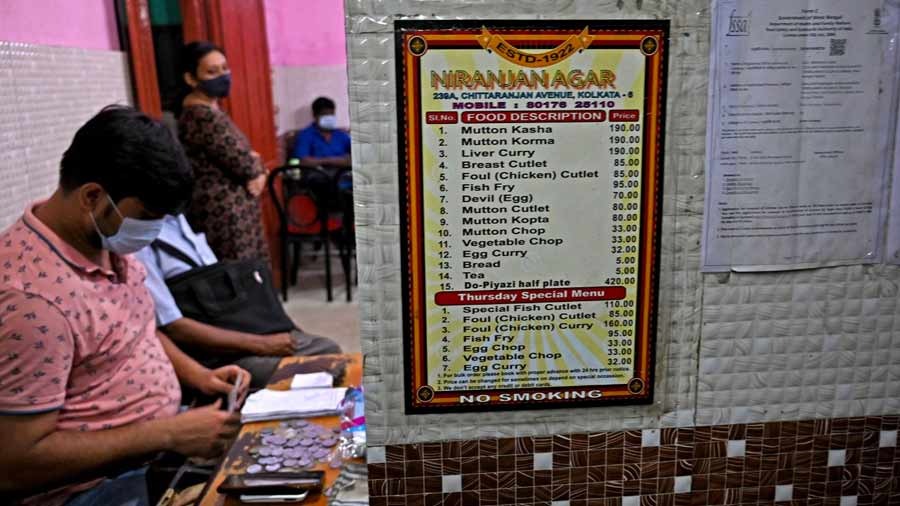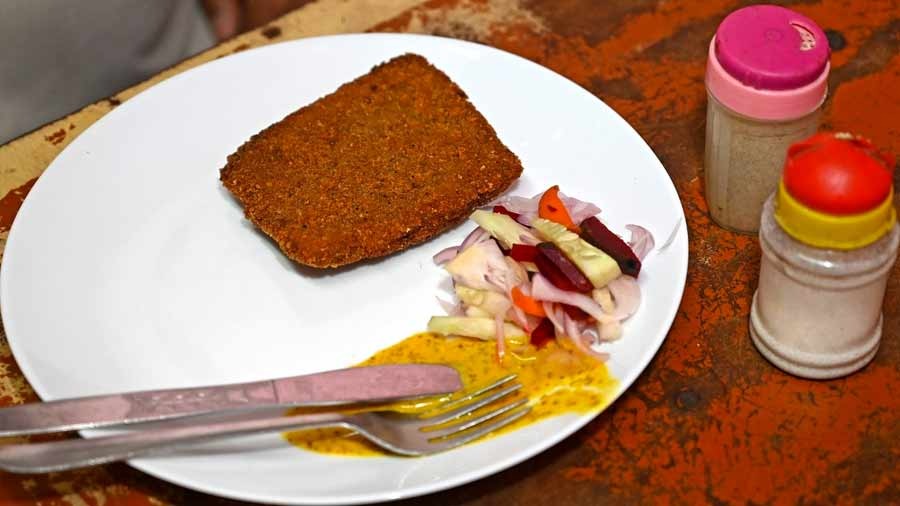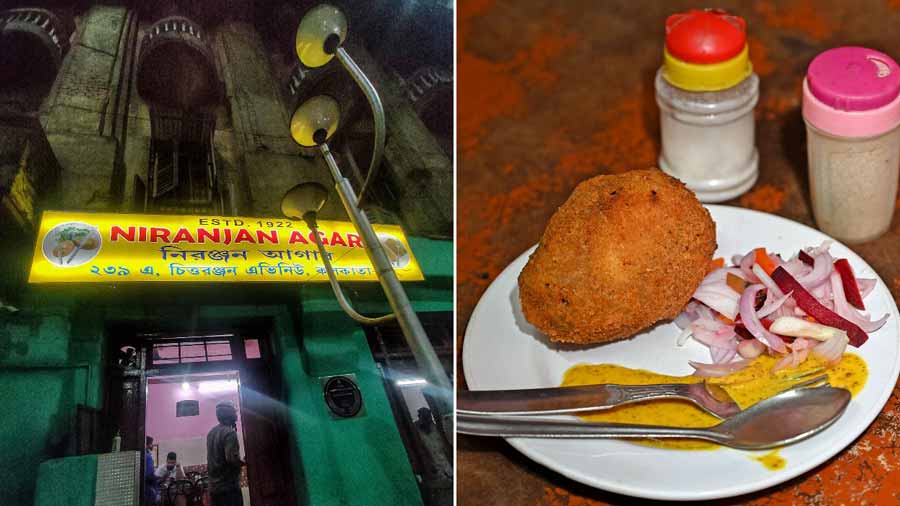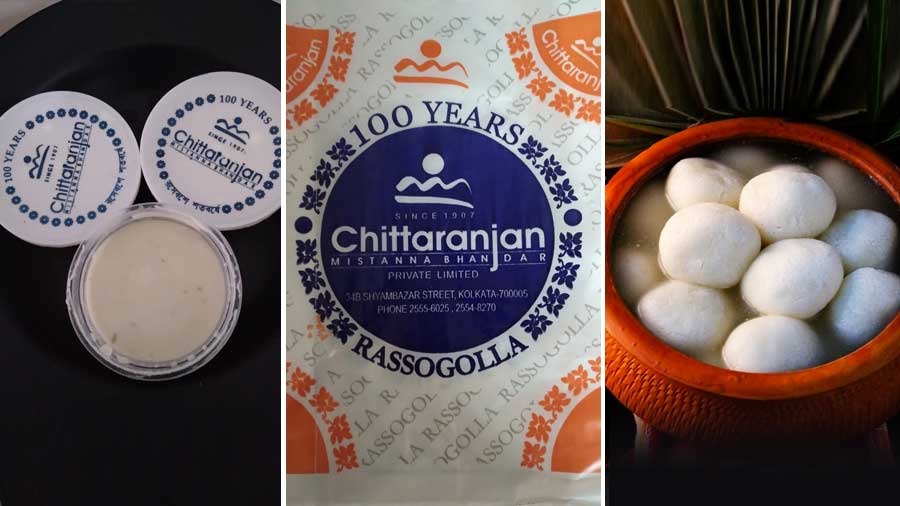Earlier this month, one of Kolkata’s oldest cabins, Niranjan Agar, rang in its centenary year with its staple dimer devil and mutton chops. One of the most popular joints in the Girish Park area, this heritage eatery is located at 239A, Chittaranjan Avenue, near the Girish Park metro station, and was established in 1922 by Niranjan Hazra.

Niranjan Agar turned 100 this month
A couple of years ago the Indian National Trust for Art and Cultural Heritage (INTACH) bestowed a heritage tag on the cabin. Niranjan Agar has been a go-to haunt for office-goers through the decades, but it was also frequented by some of the most celebrated names in Bengali celluloid, including Uttam Kumar and Tarun Kumar, who’d visit to the cabin for its famous dimer devil.

The Indian National Trust for Art and Cultural Heritage tag hangs proudly on the cabin’s wall
The devil is in the details
Niranjan Agar is unlike any other hideaway stall or telebhajar dokan. A key aspect of its legacy has to do with a dish which has a colonial origin story that still baffles some food historians. The dimer devil on Niranjan Agar’s menu shares more in common with the Bengali dimer chop than it does with the quintessential devilled eggs, which are made by scooping out the egg yolk and mixing it with mayonnaise and mustard. This luscious filling is then filled back into the egg white to be served as a delicate canape.
Niranjan Agar uses duck eggs for this recipe, which are denser and offer a smoother bite. Technically speaking, the fried coating makes the dimer devil a close cousin of the Scotch egg. Some experts believe that devilled eggs have been adapted from Scotch eggs, which is a popular European picnic dish influenced by the Mughlai Nargisi kofta. In fact, The Oxford Companion to Food also speculates that the origin of Scotch eggs may have its roots in Indian koftas.
The London departmental store, Fortnum and Mason, claims to have invented Scotch eggs in 1738. They were supposedly named after William J. Scott and his sons. But the colonial heritage of this dish is undeniable as the Fortnum and Mason website too, notes.
“It is possible that Nargisi kofta, an Indian dish made from a hard-boiled egg encased in minced meat, fried and served in a gravy, was brought back by employees of the East India Company,” the brand observes on its blog.

The dimer devil at Niranjan Agar
Despite the many theories surrounding its origin, it goes without saying that the dimer devil served on Niranjan Agar’s menu, shares very little in common with the European devilled eggs.
The Kolkata cabin makes the snack by cutting the egg into four halves and stuffing it with minced mutton. The whole egg is then given a thin layer of mashed potato and is then coated in breadcrumbs before being deep-fried.
A devil of a recipe
The debate surrounding the actual conception of devilled eggs may never be resolved. A big reason for that is the never-ending versatility of the egg as a mainstay. It has been cooked and consumed in almost every possible way and of course, more than one culture has tried to meld it with meat or flour to make it heartier — hence the overlap.

Niranjan Agar’s menu
Annette Hope, in her book A Caledonian Feast, agrees with the premise that Scotch eggs were an export from the British Raj. “It bears an odd similarity – striking though probably coincidental – with an Indian dish called Nargis kofta, which consists of hard-boiled eggs coated with cooked spiced minced mutton and fried, then cut in half and served in a sauce of curried tomato and onion,” she writes in the book, which is considered to be the definitive culinary history of Scotland.
According to some sources, the Mughal khansamas (chefs) would reduce the spice level in the koftas and serve them to the sahibs and memsahibs as croquettes, which popularised the drier, fried version.

The cabin’s fish fry is also a popular snack
Whether it is a resurfaced colonial expert or simply a Mughal-inspired snack — the dimer devil at Niranjan Agar has held on to its recipe for a 100 years now. It’s still served with a side of pungent mustard sauce and is available at Rs 70.
The snack sells out faster during the tea-time rush, just like it did in the 1900s when the traders, babus and the working-class crowd would crowd the shop in large numbers for a bite of the dimer devil. Every Thursday, Niranjan Agar has a special menu, which includes a fowl curry and egg chop — the latter is priced at Rs 33 and again, features eggs in a fried, crumb-coated vehicle — a medley which has only grown irresistible with each passing decade and bite.

